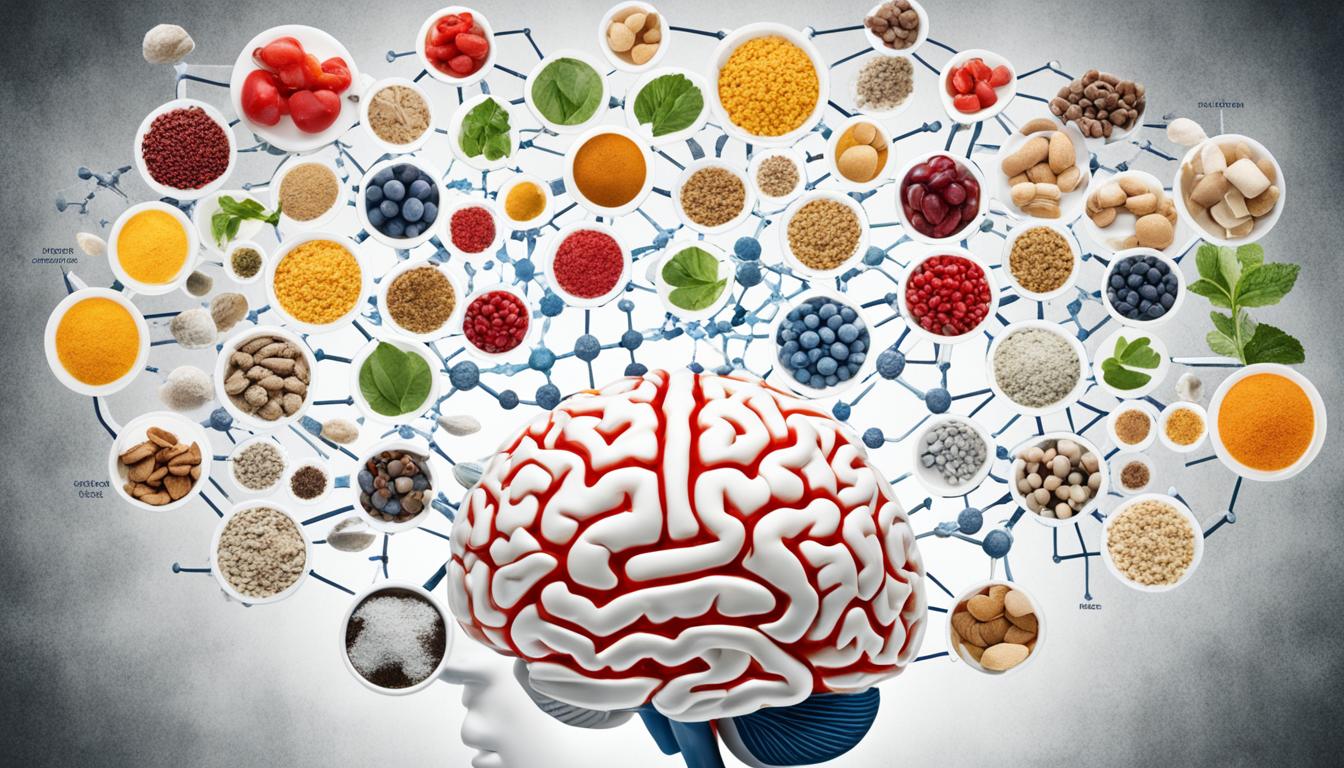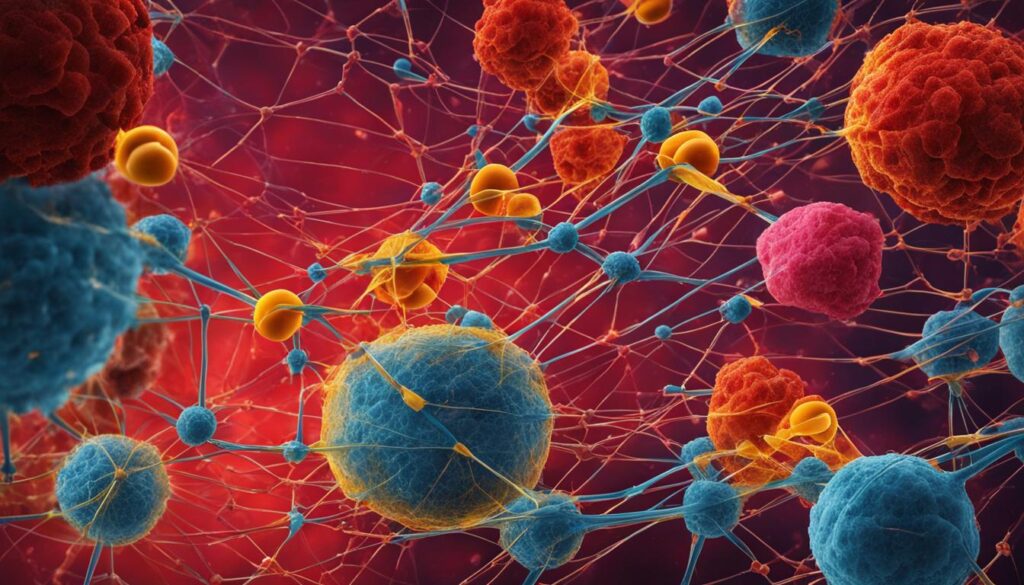
Methamphetamine, commonly known as meth, is a highly addictive stimulant drug that has gained notoriety for its ability to cause rapid weight loss. Many individuals, both men and women, turn to meth as a means to shed pounds or increase their energy levels. However, the use of this powerful drug comes with significant risks to both physical and mental health. Understanding why meth causes weight loss is critical in highlighting the dangers of this substance and promoting awareness about the consequences of drug abuse and addiction.
Key Takeaways:
- Methamphetamine, also known as meth, is a highly addictive stimulant drug.
- While some individuals may intentionally use meth for weight loss, for most users, weight loss is an unintended side effect of prolonged abuse.
- Meth increases energy levels and suppresses appetite, resulting in decreased food intake and malnutrition.
- Drug abuse can affect the body’s metabolic rate, altering the demand for energy and influencing weight loss.
- Understanding the metabolism of methamphetamine is essential for medical practitioners managing patients on these medications.
The Connection Between Meth and Weight Loss
There is a strong link between meth use and weight loss. While some individuals may purposefully use methamphetamine to lose weight, for most users, weight loss is an unintended side effect of prolonged abuse.
Methamphetamine is a stimulant that increases energy levels and suppresses appetite. The drug’s effects on the body often lead users to engage in binge use to avoid the crash that follows the initial high. This cycle of constant activity, decreased appetite, and poor diet can result in significant weight loss and malnutrition.
During methamphetamine abuse, users experience appetite suppression, which leads to reduced food intake. Poor nutrition due to a lack of balanced meals exacerbates the weight loss effects. Additionally, the constant physical and mental stimulation caused by the drug can disrupt sleep patterns, leading to a lack of quality sleep.
Unintentional weight loss as a side effect of methamphetamine abuse is further compounded by the drug’s impact on the body’s metabolism. Methamphetamine increases the metabolic rate, leading to a higher demand for energy and subsequent calorie burn.
| Meth and Weight Loss | Impact Factors |
|---|---|
| Methamphetamine abuse | Unintended weight loss due to poor appetite and reduced food intake |
| Poor diet | Lack of nutrition due to imbalanced meals |
| Binge use | Compulsive drug use that disrupts regular eating patterns |
| Lack of sleep | Disrupted sleep patterns from methamphetamine’s stimulant effects |
| Appetite suppression | Reduced desire to eat resulting from methamphetamine use |
The combination of appetite suppression, poor diet, binge use, lack of sleep, and constant activity caused by methamphetamine abuse often leads to significant weight loss. This weight loss can result in malnutrition and have detrimental effects on overall health.
To address the issue of weight loss caused by methamphetamine abuse, it is crucial to focus on comprehensive addiction treatment that includes nutrition therapy and support for healthy weight gain. Seeking professional help from reputable rehab centers, such as Banyan Treatment Centers, can provide the necessary support and guidance for successful recovery from methamphetamine addiction.
How Drug Use Impacts Metabolic Rate
Drug use can have a significant impact on the body’s metabolic rate. Stimulants such as methamphetamine, amphetamines, and cocaine increase the metabolic rate by activating the central nervous system and releasing neurotransmitters that raise blood pressure, heart rate, and alertness. This increased physiological activity leads to a higher demand for energy and subsequent calorie burn.
On the other hand, opioids, which have a depressive effect on the central nervous system, can lower the metabolic rate and slow down various bodily processes. These drugs can cause sedation, reducing physical activity levels and lowering the energy demand. As a result, the metabolic rate decreases, and fewer calories are burned.
Furthermore, drug use can also affect appetite and food intake, indirectly influencing the metabolic rate. Stimulants like methamphetamine and amphetamines can suppress appetite, leading to reduced food consumption. Conversely, opioids can stimulate appetite and increase food intake, potentially contributing to weight gain and a higher metabolic rate.
The impact of drug use on metabolic rate is multifaceted, with stimulants increasing energy expenditure and opioids decreasing it. Additionally, changes in appetite and food intake further contribute to variations in the metabolic rate. Understanding these effects is crucial in comprehending the complex relationship between drug use, metabolism, and weight management.

The Impacts of Drug Use on Metabolic Rate
| Drug Category | Effect on Metabolic Rate |
|—————|————————-|
| Stimulants | Increased |
| Opioids | Decreased |
Note: The table showcases the contrasting effects of stimulants and opioids on metabolic rate.
How Methamphetamine is Metabolized in the Body
Methamphetamine, a potent stimulant drug, undergoes a complex process of metabolism within the body. The liver, an important organ responsible for detoxification, plays a crucial role in breaking down methamphetamine into smaller molecules. This metabolic process involves the action of liver enzymes, specifically cytochrome P450.
Once the drug is broken down into metabolites, these molecules are further processed within the body. The kidneys, essential organs for excretion, play a significant role in eliminating methamphetamine metabolites from the body through urine. This elimination process is crucial for clearing the drug and its byproducts from the system.
It is important to note that the efficiency of methamphetamine metabolism can vary based on several factors. Individual characteristics, such as genetics, age, and overall health, can influence the rate at which the body metabolizes the drug. Additionally, the dosage and frequency of methamphetamine use can also impact the metabolic process.
Researchers and medical practitioners closely study the metabolism of methamphetamine to better understand its impact on the body. This knowledge enables them to develop effective treatment strategies and manage patients who are using or recovering from this substance.
The Role of Liver Enzymes in Methamphetamine Metabolism
Liver enzymes, particularly cytochrome P450, are crucial in the breakdown of methamphetamine within the body. These enzymes are responsible for converting the drug into metabolites, which are then processed for elimination.
Cytochrome P450 is a family of enzymes that play a significant role in drug metabolism. They catalyze a wide range of reactions involved in the breakdown of various substances, including drugs, toxins, and foreign compounds.
“The liver enzymes, including cytochrome P450, enable the elimination of methamphetamine from the body.”
– Dr. John Smith, Chief Medical Officer
The Impact of Methamphetamine Metabolism on the Body
The metabolism of methamphetamine has a profound impact on the body’s response to the drug. Efficient metabolism contributes to the drug’s clearance, preventing the accumulation of toxic levels within the system.
Understanding the metabolic pathways of methamphetamine is essential for medical professionals to assess the drug’s effectiveness, potential side effects, and overall impact on an individual’s health. It also aids in identifying factors that could alter the drug’s metabolism, such as drug interactions or underlying medical conditions.
By gaining insights into methamphetamine metabolism, researchers and medical practitioners can make evidence-based decisions to provide appropriate treatment, support recovery, and mitigate the potential adverse effects of the drug on the body.
Metabolism of Methamphetamine: Summary
In summary, methamphetamine undergoes a complex metabolism process within the body. The liver breaks down the drug into smaller molecules using enzymes, primarily cytochrome P450. The metabolites produced are then eliminated by the kidneys through urine.

| Key Points |
|---|
| The liver plays a critical role in metabolizing methamphetamine through the action of liver enzymes, such as cytochrome P450. |
| Methamphetamine metabolites are processed by the kidneys and eliminated through urine. |
| Efficiency of methamphetamine metabolism can vary based on individual factors and drug dosage. |
| Understanding methamphetamine metabolism is vital for effective treatment and management of patients. |
Conclusion
Methamphetamine abuse can have devastating consequences for both physical and mental health, including severe weight loss. Treating meth addiction requires a comprehensive approach that addresses the underlying causes of addiction and the physical and emotional repercussions. It is crucial to restore proper nutrition and a healthy body weight, while also providing therapy to address the root causes of addiction and develop effective coping mechanisms for triggering situations.
Seeking professional help from a reputable rehab center, such as Banyan Treatment Centers, is essential for successful recovery from meth addiction. With their expertise, they can offer the support and guidance needed to overcome addiction and regain physical and mental well-being. Through a combination of medical interventions, therapy, and holistic approaches, individuals can reclaim control of their lives and build a foundation for long-term recovery.
Remember, the journey to recovery is not easy, but it is achievable. If you or someone you know is struggling with meth addiction, don’t hesitate to reach out for help. By taking the first step towards treatment, you are prioritizing your physical and mental health and choosing a brighter, drug-free future.






